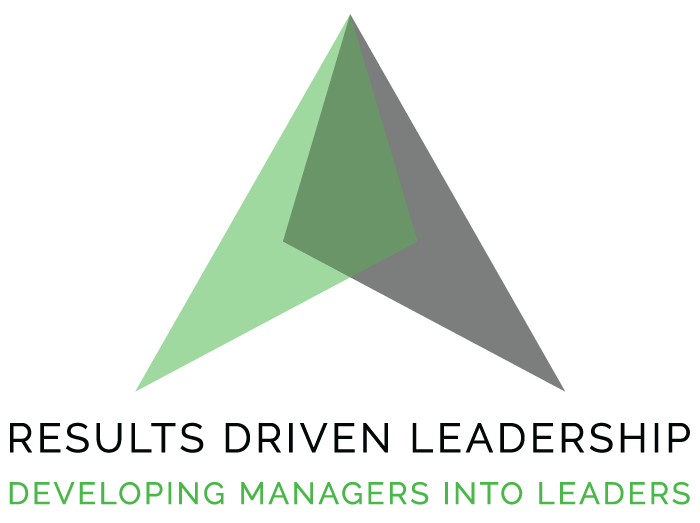At its core, critical thinking is the objective analysis and evaluation of an issue in order to form a judgment.
It’s not just about gathering information, but about understanding and interpreting that information in various contexts.
Historical Context: Philosophical Roots and Evolution
The foundation of critical thinking can be traced back to ancient civilizations like Greece, particularly in the teachings of Socrates, who famously questioned everything. From the Renaissance thinkers to the modern era, critical thinking has evolved, incorporating scientific methods and societal influences, becoming an essential tool in various fields.
Benefits and Challenges of Critical Thinking
The benefits are myriad. Critical thinking promotes clearer thinking, better decision-making, and problem-solving. It encourages us to remove biases and see issues from multiple perspectives. However, it’s not without challenges. The process requires effort, an open mind, and the capacity to sometimes admit one’s errors, which can be difficult for many.
Let’s look at a case study, and then I will share my input on how this company dropped the ball on critical thinking.
Analyzing Leadership Failures and Successes

The Talent Oversight: Julia’s Missed Promotion at TechFlow Inc.
TechFlow Inc., a burgeoning tech startup, was gaining traction in the industry. Their innovative products had secured a steady stream of clientele, and the atmosphere in the office was always buzzing with excitement and ambition. Julia, a dedicated project manager who had been with the company since its inception, was at the heart of this success. She was known for her meticulous approach to problem-solving, her ability to rally her team, and her knack for successfully delivering even the most complex projects.
As TechFlow grew, the need for a new senior executive role—Vice President of Project Management—became evident. This role would oversee multiple project managers and ensure the seamless execution of larger, company-wide initiatives.
Given Julia’s undeniable expertise and her history with the company, many within the team, including Julia herself, assumed she would be the natural choice for the promotion. Julia had shown technical proficiency and leadership acumen, often mentoring newer team members and acting as an intermediary between her team and higher-ups.
However, the company’s HR department and top executives decided to go a different route. Believing that bringing in someone with “big company” experience would be more beneficial, they initiated an external recruitment process. They hoped that someone from a more established, larger tech company would bring in fresh strategies and an extensive network.
A few months later, Michael, previously a middle manager from a leading tech conglomerate, was appointed as the Vice President of Project Management. Although he came with a commendable background, he lacked the intimate knowledge of TechFlow’s intricate projects, its culture, and the relationships that Julia had fostered over the years.
The initial months were rocky. With his larger corporate mindset, Michael struggled to adapt to the agile and entrepreneurial spirit of TechFlow. Many decisions he made came across as out-of-touch, leading to multiple project delays and increased friction among teams.
Julia, on the other hand, felt overlooked and demotivated. The decision not only affected her morale but also resonated with other employees who saw her as the embodiment of dedication and hard work. Julia eventually received an offer from a competitor and left, taking with her invaluable institutional knowledge and leaving a noticeable void in the company’s project management division.
As time went on, TechFlow grappled with declining team morale, missed project deadlines, and growing client dissatisfaction. The top executives and HR realized that while Michael’s resume was impressive on paper, they had failed to consider the intrinsic value Julia brought to the role—her intimate knowledge of the company’s inner workings, her rapport with her team, and her deep-rooted understanding of TechFlow’s culture and mission.
Conclusion: TechFlow’s oversight highlights the importance of recognizing and nurturing internal talent. External hires can bring new perspectives, but failing to critically evaluate the potential of existing employees can result in a loss of talent, institutional knowledge, and team cohesion. In the realm of HR and people decisions, a holistic approach that values loyalty, company knowledge, and consistent performance is imperative.
Post-Mortem Analysis: The Oversight at TechFlow Inc.

1. Failure to Define Criteria Clearly: One of the fundamental aspects of critical thinking is setting clear criteria for decision-making. TechFlow’s HR and top executives overlooked defining what they truly wanted from the Vice President of Project Management role. Had they emphasized intrinsic company knowledge, team rapport, and culture fit alongside other qualifications, Julia might have emerged as the obvious candidate.
2. Lack of Perspective-Taking: Another facet of critical thinking involves considering multiple perspectives. The HR team and executives didn’t factor in the perspectives of the project teams, especially those who had closely worked with Julia and could vouch for her competence and dedication.
3. Ignoring Past Data: Julia had a consistent track record of delivering projects and mentoring team members. Ignoring this historical data in favor of theoretical benefits of “big company” experience was a missed opportunity to critically evaluate real performance against assumed potential.
4. Not Weighing Pros and Cons: While there’s value in fresh perspectives that external hires can bring, there are also inherent risks. TechFlow failed to critically weigh the advantages of Julia’s intimate company knowledge against the potential benefits of an outsider’s viewpoint.
5. Confirmation Bias: It’s possible that once the decision-makers had the idea of hiring externally, they became fixated on the benefits of such a decision, sidelining any contradicting evidence or opinions that suggested otherwise. They sought confirmation of the benefits of an external hire without critically evaluating the downsides.
6. Overvaluing Certain Experiences: Assuming that someone from a larger corporation would automatically be a better fit is a critical thinking lapse. Each company, big or small, has its unique challenges. Experience in one doesn’t necessarily translate to success in another, especially when company cultures differ.
7. Not Anticipating the Ripple Effect: Good critical thinking involves thinking steps ahead. The decision-makers failed to anticipate the broader implications of overlooking an internal candidate – from the demotivation of Julia to the wider team’s morale, leading to a negative ripple effect through the company.
8. Lack of Feedback Mechanisms: One of the tools of critical thinking is the ability to seek and incorporate feedback. Had there been a mechanism to get feedback from various teams or even from Julia herself, the decision-makers might have gained valuable insights to influence their decision.
Conclusion: The oversight at TechFlow Inc. underscores the profound importance of comprehensive critical thinking in HR decisions. Every decision, especially ones concerning people and leadership roles, requires a multi-faceted approach, factoring in past performance, multiple perspectives, potential ripple effects, and more. It’s a lesson for organizations to embed critical thinking deeply into their decision-making processes, especially when their most valuable assets—their people—are concerned.
Now here is an example of effective critical thinking.

Dollar Shave Club: Disrupting the Razor Market with Critical Thinking
In a world dominated by established shaving brands, Michael Dubin and Mark Levine looked critically at the razor industry and recognized an opportunity. Why were razors so expensive? Was there a real justification for the high prices, or was it a mere result of monopolistic practices? These questions, coupled with a genuine curiosity, led them to create the Dollar Shave Club.
Identifying an Oversaturated Market with Overpriced Products
While brands like Gillette had been around for over a century, boasting advanced technology and multi-blade innovations, their razors came with a hefty price tag. Dubin and Levine critically assessed the situation and realized that while these big brands were investing heavily in marketing and pushing their latest innovations, many consumers just wanted a simple, effective, and affordable way to shave.
A Simple Proposition and Viral Marketing
Dollar Shave Club’s critical thinking didn’t stop at the product; it extended to their marketing strategy as well. Instead of going the traditional advertising route, which would have cost a fortune, they created a quirky, low-budget video starring Dubin himself. This video, titled “Our Blades Are F***ing Great,” went viral, highlighting both the product’s simplicity and its cost-effectiveness. The message was clear: Why pay more when you can get a great shave for less?
Expanding the Brand
Dollar Shave Club continued to apply critical thinking as they grew. They didn’t just stop at razors. Recognizing that their target audience would appreciate a broader range of grooming products delivered right to their door, they expanded into shave butter, aftershave, haircare, and even shower products.
A $1 Billion Unilever Acquisition
The culmination of Dollar Shave Club’s success, fueled by their critical thinking, came in 2016 when consumer goods giant Unilever acquired the company for a staggering $1 billion. This acquisition was not just a testament to Dollar Shave Club’s rapid growth, but also to the power of questioning established norms and looking at industries with a fresh, critical perspective.
Post-Mortem Analysis: The Rise of Dollar Shave Club
1. Precise Problem Identification: Dollar Shave Club (DSC) emerged from a simple problem: razor blades were too expensive and shopping for them was an inconvenient chore. By identifying and clearly understanding this primary pain point of consumers, DSC set the stage for its disruptive business model.
2. Evaluation of Market Dynamics: DSC recognized the monopoly-like structure of the razor industry, with a few significant players marking up prices. Their critical analysis of this market dynamic enabled them to position their brand as a direct challenger, offering quality at a fraction of the cost.
3. Assessing Consumer Behavior: Understanding that modern consumers were increasingly looking for convenience, DSC’s subscription model was not just about affordability, but also about delivering convenience right to the customer’s doorstep.
4. Effective Use of Data: DSC leveraged data to understand customer preferences, adjust their marketing strategies, and refine their product offerings. This data-driven approach allowed them to stay agile and responsive to changing consumer needs.
5. Courage to Challenge the Status Quo: Critical thinking often involves challenging prevailing assumptions. Instead of following the traditional advertising playbook, DSC launched with a viral, humorous video that not only advertised the product but also established the brand’s irreverent identity.
6. Forward-Thinking Supply Chain Management: Anticipating growth and the need to fulfill a significant number of orders, DSC critically evaluated its supply chain to ensure it could scale while maintaining quality and delivery promises.
7. Regular Feedback Loops: Through regular engagement and feedback mechanisms, DSC ensured that they continuously understood their customers’ evolving needs, leading to product enhancements and new product lines.
8. Collaborative Decision-Making: DSC fostered a culture where team inputs were valued. Multiple perspectives, from design to distribution, were considered in decision-making processes, ensuring comprehensive evaluations of challenges and opportunities.
9. Anticipating Competitive Response: DSC’s rise inevitably led to increased competition, both from startups and established players. Thier critical thinking foresaw this, leading to continuous innovation, from expanding product lines to enhancing their marketing strategies.
10. Exit Strategy Assessment: Recognizing when to partner or sell is a critical decision for any startup. DSC’s decision to be acquired by Unilever for $1 billion was a strategic move, ensuring they could leverage Unilever’s vast resources to expand globally while continuing to operate with their unique brand identity.
Conclusion: Dollar Shave Club’s success story is a testament to the power of critical thinking in entrepreneurship. DSC transformed a simple idea into a billion-dollar business by continuously questioning industry norms, staying data-driven, valuing diverse inputs, and staying agile in the face of competition. Their journey offers invaluable insights for startups and established businesses alike, underlining the importance of deep, critical evaluation at every stage of the business lifecycle.
Real-World Takeaways from the Two Stories
1. Embrace Continuous Learning: Both the failure story of the HR decision and the success story of the Dollar Shave Club highlight the importance of continuous learning. While the HR tale serves as a cautionary reminder about the pitfalls of not updating one’s knowledge base and relying on dated practices, Dollar Shave Club exemplifies the rewards of staying in tune with market shifts and customer preferences. For today’s leaders, it’s essential to adopt a growth mindset, be receptive to new information, and be willing to adjust strategies based on updated knowledge.
2. Value Diverse Perspectives: One of the significant mistakes the company in our HR story made was not seeking diverse input before making a crucial people decision. In contrast, Dollar Shave Club thrived by fostering a culture where diverse inputs were considered. Decision-makers must ensure that they consult a broad range of voices, especially when making critical choices, as this can prevent tunnel vision and lead to more comprehensive strategies.
3. Prioritize Clear Communication: In our HR story, the lack of clear communication was evident. Assumptions were made, and information was not adequately disseminated. Dollar Shave Club, however, effectively communicated both internally with its team and externally with its audience. Transparent and consistent communication builds trust, ensures everyone is on the same page, and minimizes the chance of misunderstandings.
4. Stay Consumer-Centric: Dollar Shave Club’s rise can largely be attributed to its focus on consumer needs, from product affordability to convenience. The HR failure story indirectly reinforces this principle, as neglecting the needs and aspirations of employees (the internal customers) led to detrimental outcomes. Leaders must keep the needs of their customers, both internal and external, at the heart of their decision-making process.






